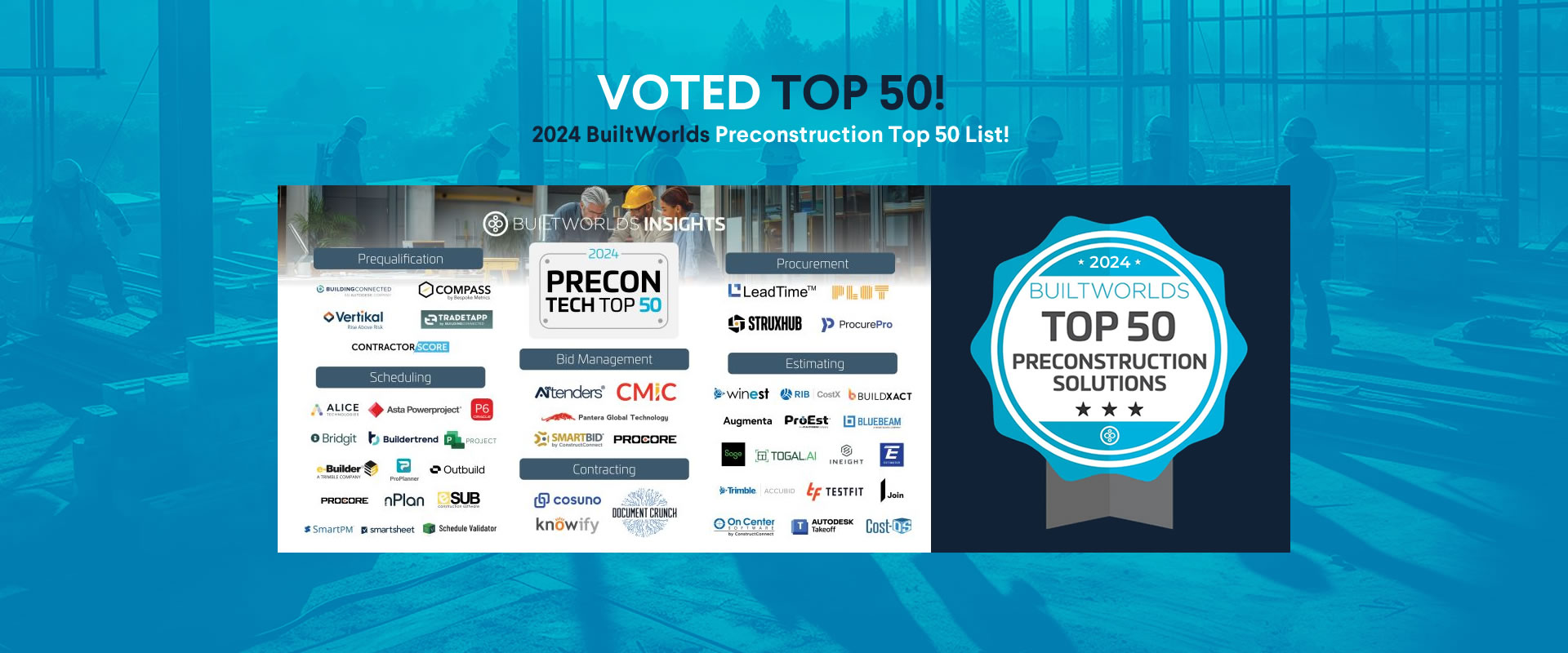Unveiling the Future of American Manufacturing: The Top U.S. Construction Projects Transforming the Industry
Table of Contents:
The American manufacturing landscape is experiencing a renaissance, invigorated by groundbreaking initiatives and substantial investments. At the forefront of this revival is the monumental surge in construction projects across the nation, particularly in sectors critical to the economy’s future, such as semiconductors, electric vehicle (EV) batteries, and consumer goods. This transformative period, fueled by the CHIPS and Science Act of August 2022, marks a significant shift towards revitalizing the U.S. manufacturing dominance and fostering innovation and sustainability.

The CHIPS Act: A Catalyst for Change
With the CHIPS and Science Act, signed by President Joe Biden, ushering in a new era of technological advancement and economic growth, the U.S. is set to reclaim its position as a global manufacturing powerhouse. This legislation, earmarking $52 billion in funding, aims to bolster American semiconductor research, development, and manufacturing, alongside workforce development. The act is a cornerstone in the nation’s strategy to secure supply chains, enhance technological capabilities, and stimulate high-tech manufacturing on American soil.
Spotlight on Major Projects
Since the enactment of the CHIPS Act, the U.S. has witnessed an influx of over $640 billion in private investments, spanning diverse fields from biotech to clean energy. Key projects making headlines include Texas Instruments’ $11 billion semiconductor facility in Utah and transformative EV battery plants like the $3.5 billion Samsung SDI project in Indiana. These ventures not only represent the technological ambitions of the U.S. but also its commitment to sustainable and innovative manufacturing practices.
The Economic Impact: A Surge in Construction Spending
Reflecting this dynamic shift, manufacturing construction spending has seen an impressive uptick, with a 59.1% increase in just 12 months through November. This growth, representing a seasonally adjusted annual rate of approximately $209.78 billion, underscores the sector’s robust expansion and the pivotal role of construction in realizing these ambitious manufacturing goals.
Looking Ahead: The Future of Manufacturing in America
The landscape of American manufacturing is evolving, driven by strategic investments and a clear vision for the future. The CHIPS Act not only facilitates the resurgence of domestic manufacturing but also propels the U.S. towards a future marked by innovation, sustainability, and economic prosperity. As these construction projects progress, they not only lay the physical foundations for advanced manufacturing facilities but also symbolize the nation’s commitment to securing its technological and economic sovereignty.
1. The Rise of Semiconductor Mega Projects in the U.S.
“Semiconductor Construction Boom: The Top U.S. Projects Defining Tech’s Future”
The United States is currently witnessing an unprecedented boom in semiconductor construction projects, a direct result of the CHIPS and Science Act. This legislation has catalyzed a wave of new facilities, including Texas Instruments’ $11 billion project in Utah, which promises to significantly enhance the nation’s chip manufacturing capabilities. These mega projects are not just about producing more chips; they’re about securing the U.S. position in the global tech landscape, fostering innovation, and creating thousands of jobs. As technology continues to advance, the demand for semiconductors in everything from consumer electronics to defense systems grows, making these projects critical for the future of U.S. tech dominance.
2. Electric Vehicle Battery Plants Powering Up
“Electrifying the Future: How U.S. EV Battery Plants Are Driving Automotive Innovation”
Electric vehicle (EV) battery manufacturing is gaining momentum in the United States, with significant investments like the $3.5 billion Samsung SDI plant in Indiana. These facilities are pivotal for the transition to greener transportation, reducing reliance on imported batteries, and bolstering the domestic automotive industry. By localizing EV battery production, the U.S. is laying the groundwork for a sustainable automotive future, ensuring that American-made EVs are powered by American-made batteries. This trend not only supports environmental goals but also strengthens the U.S. economy and its position in the global EV market.
3. Biotechnology Facilities: Pioneering Medical Advances
“Biotech Construction Boom: How New Facilities Are Shaping U.S. Medical Innovations”
The expansion of biotechnology facilities across the U.S. is a testament to the country’s commitment to leading in medical innovation and pharmaceutical manufacturing. These state-of-the-art complexes are designed to foster research and development in life-saving drugs and therapies, positioning the U.S. as a hub for medical breakthroughs. With the global health landscape more critical than ever, these investments in biotech construction are essential for advancing healthcare solutions and securing a leading role in global health and wellness.
4. Renewable Energy Manufacturing Hubs
“Building a Greener Future: The Role of U.S. Renewable Energy Manufacturing Hubs”
Renewable energy manufacturing is on the rise in the U.S., with new facilities focusing on solar panels, wind turbines, and other green technologies. These hubs are crucial for the country’s energy transition, reducing carbon footprints, and achieving sustainability goals. By investing in renewable energy manufacturing, the U.S. is not only addressing climate change but also creating jobs and leading by example in the global shift towards sustainable energy sources.
5. Advanced Materials and Composites Production
“Innovating Construction: The Surge in U.S. Advanced Materials Manufacturing”
The manufacturing of advanced materials and composites in the U.S. is setting new standards for construction, aerospace, automotive, and other industries. These materials, known for their strength, durability, and lightweight properties, are revolutionizing product design and manufacturing processes. The growth in this sector underscores the U.S.’s commitment to innovation and its role in shaping the future of manufacturing with materials that offer environmental benefits and efficiency improvements.
6. Data Center Construction for a Digital Age
“Data Centers: Fueling the Digital Economy with U.S. Construction Projects”
The construction of data centers across the U.S. is a direct response to the exponential growth of digital data, cloud computing, and online services. These facilities are the backbone of the digital economy, supporting everything from streaming services to remote work infrastructures. As data consumption and storage needs continue to skyrocket, the expansion of data centers ensures that the U.S. remains at the forefront of the digital age, offering robust, secure, and scalable solutions.
7. Sustainable Manufacturing Practices
“Eco-Friendly Manufacturing: How U.S. Facilities Are Leading Sustainability Efforts”
Sustainable manufacturing practices are becoming a priority for new facilities in the U.S., focusing on minimizing environmental impact through energy efficiency, waste reduction, and green building standards. These practices not only help in combating climate change but also improve operational efficiency and cost-effectiveness. By adopting sustainable manufacturing, the U.S. is setting a global standard for environmentally responsible production.
8. Smart Factories and IoT Integration
“Smart Factories: Transforming U.S. Manufacturing with IoT and AI”
The integration of Internet of Things (IoT) and artificial intelligence (AI) in manufacturing facilities, or “smart factories,” is revolutionizing production processes in the U.S. These technologies enable real-time monitoring, predictive maintenance, and automation, enhancing efficiency, safety, and product quality. The trend towards smart factories reflects the U.S.’s commitment to embracing digital transformation and maintaining a competitive edge in manufacturing.
9. Investment in Infrastructure to Support Manufacturing
“Strengthening Foundations: The U.S.’s Investment in Infrastructure for Manufacturing Growth”
Significant investments in infrastructure are essential to support the growing manufacturing sector in the U.S. This includes upgrading transportation networks, utilities, and telecommunications to ensure that manufacturing facilities are well-connected and efficient. By bolstering infrastructure, the U.S. is creating a conducive environment for manufacturing growth, enhancing logistics, and ensuring the seamless operation of these critical economic engines.
10. Workforce Development and Training Programs
“Empowering Workers: The Impact of Workforce Development in U.S. Manufacturing”
As manufacturing technologies evolve, so does the need for a skilled workforce. The U.S. is investing in workforce development and training programs to ensure that workers have the skills needed for the jobs of tomorrow. These programs are vital for filling the skills gap, promoting job creation, and sustaining the manufacturing sector’s growth. By focusing on education and training, the U.S. is preparing its workforce for the future, ensuring that it remains competitive in the global manufacturing landscape.
Each of these trends and examples underscores the dynamic and multifaceted nature of the U.S. manufacturing sector’s growth, driven by innovation, sustainability, and a forward-looking approach to economic development.
The ongoing manufacturing boom in the U.S. is more than a series of construction projects; it’s a testament to American resilience, innovation, and foresight. By embracing the opportunities presented by the CHIPS and Science Act, the U.S. is not just investing in bricks and mortar but in the very future of manufacturing itself.
StruxHub: Revolutionizing Construction Operations for a Smarter, More Efficient Future
In the ever-evolving world of construction, where complexity meets ambition, StruxHub stands as a beacon of innovation and efficiency. Born from a deep-rooted passion for building and a keen eye on the challenges that builders face daily, StruxHub emerged as a game-changer in November 2023, spinning out of the visionary Holcim innovation project (2018-2023). Our mission is simple yet profound: to empower builders to construct better, smarter, and with more predictable outcomes through seamless collaboration, reduced waste, and enhanced operational efficiency.
At StruxHub, we understand that the heart of successful construction projects lies in precise coordination and communication. Recognizing the gap in effective tools for managing the myriad aspects of job sites, we crafted an operations platform that transforms project data into actionable insights. StruxHub is not just a tool; it’s a comprehensive ecosystem that manages all major field workflows—from delivery coordination and site logistics to safety protocols and schedule optimization. Our platform brings clarity and control to the chaotic environment of construction sites, enabling general contractors to streamline operations like never before.
Our suite of applications is designed to address the multifaceted challenges of construction management:
- Delivery Management: Streamline deliveries with an innovative coordination system that integrates seamlessly with supplier apps, manages crane and shared resource schedules, and optimizes truck routing based on site logistics.
- Site Communication: Enhance on-site communication with georeferenced maps, broadcast announcements, and messaging across teams and companies, ensuring everyone is on the same page.
- Materials Management: Simplify materials tracking with tools to upload procurement sheets, monitor on-site inventory, and link materials directly to deliveries and activities.
- Safety & Inspection Form Workflows: Customize and standardize mobile forms for safety inspections, work permits, and more, with automated routing for approvals and notifications.
- Short-Term Scheduling: Visualize and manage activities with imported schedules, tying tasks to specific locations and viewing everything on detailed floor plans.
- Resource Management: Implement efficient time tracking and resource management by scanning user badges, optimizing the utilization of every team member on-site.
Our platform has garnered the trust and partnership of top general contractors across the globe, including industry giants like Turner, DPR, and McCarthy, to name a few. These collaborations are a testament to StruxHub’s impact, driving efficiencies and delivering unmatched value. For instance, Turner Construction experienced a staggering 20x ROI by using StruxHub for delivery coordination, highlighting our platform’s ability to significantly reduce manual coordination time and prevent common site logistics issues.
StruxHub is more than just a software solution; it’s a movement towards a more integrated, transparent, and efficient construction industry. Our vision extends beyond the present, aiming to connect every tier of the construction supply chain through field workflows and data-driven insights. We’re not just building software; we’re building the future of construction, project by project.
Step into the future of construction management with StruxHub. Request a demo now to explore how our comprehensive platform can transform your project delivery. Discover the StruxHub advantage and elevate your construction management to new heights.
Don’t miss out on the opportunity to optimize your construction management processes with StruxHub. Sign up for a free demo today. Let’s build smarter, together.




